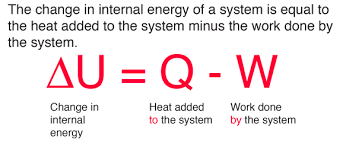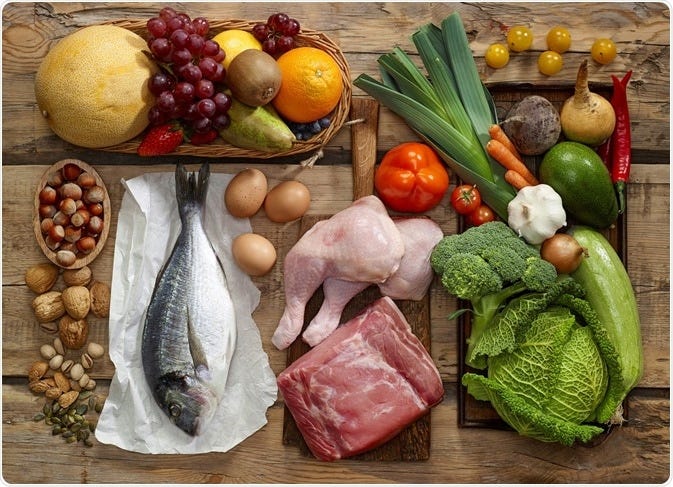Nutrition Protocols for Long Term Results
Simple Diet Protocols to Chisel Away Excess Fat & Build a Sustainable Long-term Nutrition Plan
Diets suck. I try to avoid the term diet (as a verb) as much as possible. I truly believe if most people did any of the protocols below and adhered to the simple rules in the next section, they could have a decent body composition and minimize many health issues. Especially if you layer in regular training and activity into their lifestyle.
This article is going to just cover 5 protocols I recommend for clients to try for their nutrition. They’re intended to be used forever, not for a 7 day cleanse, 30 day challenge, or 12 week diet plan. If you want to get results and keep them it’s going to require changing your lifestyle. There are no temporary solutions to permanent problems.
Weight Loss Basics
I wanted to touch on similarities between successful diets. You can lose a lot of weight really quickly in a week but that doesn’t mean it’s successful if you regain it back and then some days later. Let’s define a successful diet as a meaningful and positive change in body composition that can be maintained in normal conditions.
Here are some simple rules to follow when trying to find a diet strategy that works for you, and most importantly, one that you can sustain forever.
1.) Eat a high protein diet.
Aim for at least 1.5-2.0 g/kg of protein per day. This means a 70 kg person (roughly 155 lbs) should eat about 105-140 g of protein per day.
2.) Focus on whole foods.
Single ingredients foods are the best option for satiety and have greater nutrient density compared to their processed counterparts. Whole foods include: Meat, vegetables, fruits, grains, nuts, seeds, eggs, and dairy. Foods from these categories should be the vast majority of your diet (well over 80% of everything you put in your mouth).
3.) Minimize processed food.
Processed food will typically be less satiating which could lead to over eating, contains less micro nutrients, and tends to not have the same metabolic benefits as whole foods do. Thermic effect of feeding has been shown in some studies to be lower with processed food compared to whole foods. Simply put, you burn more calories eating nutrient dense, whole food. Processed foods are just that: processed. They’re already a broken down form their original components; as a result, it’s easier for the body to digest them.
Fundamental Principle of Weight Loss
The first law of thermodynamics claims that matter cannot be created nor destroyed, simply just converted. Unless you live in a black hole or your GI tract is a wormhole that defies the laws of physics, thermodynamics in the human body will abide by this principle. Regardless which diet you choose, keep in mind you will need a caloric deficit to achieve weight loss. Metabolic rate can be a moving target, so keep in mind things like protein content, activity, sleep, hormones, and more can all affect ones metabolic rate.
Read More About Metabolism: Metabolism is a moving target
1.) Intermittent Fasting Protocol
Back in the day we just called this skipping breakfast. Many people already do a form of fasting they just don’t know it. Autophagy (essentially the process of destroying and regenerating new cells) is often thrown out when fasting is mentioned. Usually with no added context by people who don’t actually know anything about it.
There likely isn’t any more autophagy occurring to a significant degree from fasting vs. eating the same calories spread out throughout the day evenly. It occurs when there’s an energy deficit whether that’s over 3 hours or 8 hours. Since during fasting there’s one large window of an energy deficit, autophagy is ramped up in the short term and then down regulated when a large meal is consumed later in the day.
The impact of short term fasting on autophagy is likely negligible compared to eating regularly spaced meals. With a regular diet that has more evenly spaced-out meals, autophagy will spike between meals and likely end up the same or close to whatever benefit you received from fasting. The area under the curve is going to be very similar between evenly spaced meals and a strategy like fasting where autophagy is elevated but then severely dampened when large sums of food are consumed.
The power of fasting is it restricts feeding windows and allows better calorie control with a clear and easy to follow constraint: time. There’s nothing magic about fasting other than the fact that it’s more difficult to eat large quantities of food in a single sitting or two.
Consuming adequate protein and timing it to maximize muscle protein synthesis is going to be difficult with fasting. It will also be difficult, albeit not impossible, to consume enough total protein in a day as well. If you don’t believe me, try eating 2lbs of chicken breast (roughly 200g of protein) in one sitting. It’ll be challenging.
There are many templates and styles when it comes to fasting, but I suggest a couple popular ones below.
“The power of fasting is it restricts feeding windows and allows better calorie control with a clear and easy to follow constraint: time.“
5:2 Intermittent Fasting
Simply put, 5:2 fasting means fasting only twice per week and eating as usual 5 times per week. I would emphasize eating whole foods most of the time regardless of which protocol you adhere to. Diet quality (AKA eating “healthy” food) should always be a priority and this is no exception to the 5 non-fasting days. The non-fasting days are not intended to pig out on junk food although with good planning one day could be used as a refeed or high day where more calories are strategically consumed.
I would recommend fasting on weekend days or one weekend day and during the week. This strategy best mitigates any potential damage of overeating. Since many people also tend to overeat on weekends, restraining calorie intake on those days is a generally good idea.
Warrior Diet
The warrior diet suggests fasting for 20 hours and having a feeding window of 4 hours. This essentially narrows down to having one meal a day or just a 4 hour binge sometime during the day. There are specific phases within this diet to follow that go beyond just the feeding window however for the purpose of this article I just wanted to introduce the concept. Many claims the author of the warrior diet makes aren’t well supported but if you’d like to read more you can click here.
If you take this approach, I would recommend modifying it and completing the fast 1-2 times per week instead of every single day.
16:8 Fast
The 16:8 fast is one of the most popular fasts to follow. It involves fasting for 16 hours and having a feeding window of 8 hours. A 16:8 fast can look something like this:
Last meal of the day: 5:30-6pm
Fasting Window: 6pm - 10am
Eating Window: 10am - 6pm
Nothing crazy right? Ideally within your feeding window you fit in 2-3 meals or 3-5 smaller meals to better optimize protein synthesis. Since a 16:8 fast is a pretty moderate approach, you can easily do it daily. It also fits most lifestyles as people typically have lunch mid day and dinner when they get home.
Alternative Option:
Last meal of the day: 7:30-8pm
Fasting Window: 8pm - 12pm
Eating Window: 12pm - 8pm
One of the above examples should be able to accommodate the schedule of most working professionals while still providing a somewhat steady stream of energy.
2.) Carb Cycling Protocol
Mainstream diet media is littered with low and no carb diets. Carb cycling provides a happy medium between still getting the benefits of carbs while losing body fat or maintaining your physique. The idea behind carb cycling is simple: consume carbs only in the peri-workout (PW) period. PW is the time surrounding a workout. For the purpose of this article we’ll define the PW period as anytime prior to 2 hours of working out, during the session itself, or within an hour after the workout.
The idea behind this protocol is to use carbohydrates when you need them most. Sitting on the couch or in an office doesn’t require much glucose for energy. Glycogen (stored glucose in your body) will primarily be tapped into during higher intensity activity. Timing carbohydrates around rest periods will either replenish glycogen stores (if they’re depleted) or just be stored as fat. It therefore makes sense to intake most or the majority of daily carbs in the PW period.
“The idea behind carb cycling is simple: consume carbs only in the peri-workout (PW) period.”
Carb cycling better partitions carbohydrates since they will be used mostly when they’re needed. It also means you can actually consume carbohydrates and still improve your body composition, which isn’t the case for many mainstream diets. Carbohydrates also provide a readily available fuel source for the body and have been demonstrated to improve performance, decrease cortisol, & generally improve recovery from hard training.
3.) Paleo Diet Protocol
Paleo gained popularity when crossfit was coming onto the big stage just around a decade ago. Paleo provides pretty easy to follow dietary constraints for most folks and it adheres to the principle of eating mostly whole foods. A paleo diet can simply be described as eating what cave men ate. I think taking a loose interpretation on this is best as cavemen couldn’t import avocados or fruits from other climates. Not to mention they were at the mercy of the climate.
A paleo diet is one that includes: Meat, vegetables, fruit, nuts, & seeds. You could liberalize this approach and include other items such as dairy, cheese, roots, tubers, & grains. The paleo diet really boils down to eating only foods that don’t come with a food label. This diet is more restrictive than some of the prior ones in terms of food choices but the diet quality is likely going to be better
4.) If It Fits Your Macros (IIFYM)
I firmly believe everyone should track their macronutrients for at least 30-days for awareness and for 6 months or longer to really understand how to take their body through nutrition phases (cut, bulk, maintain, reverse diet). I’m a big fan of tracking your nutrition, even if it’s temporary. I posted plenty of content on this in the past, you can see those reasons by clicking here.
IIFYM (also known as flexible dieting) was initially popularized by the bodybuilding & aesthetic training community. It involves hitting a determined amount of protein, fat, carbohydrates, and calories each day. Many people tend to stray away from this diet since it involves daily tracking. However, this is the most precise protocol of the ones listed. You can easily adjust your intake to lose weight incrementally since there is objective data that can be modified.
IIFYM makes you hyper aware of your diet which can be really good for most people and negative for those who are already hyper obsessive. If you’re looking for a diet protocol that cuts through fat with precision, IIFYM is your best bet. If really only takes 1 minute to track all your food for a day.
Click here if you don’t believe me.
P.s. I recommend cronometer or avatar nutrition for tracking.
5.) Train Hard, Eat Clean (THEC)
THEC (sometimes known as tren hard eat clen) is an acronym I made up to best summarize this diet. Steeped in bro culture it flows through the air of every commercial gym. Chicken, rice, broccoli, maybe an occasional cheat day, and some prayers to our lord and savior Ronnie Coleman (yeah buddy). THEC is a bro diet but don’t be mistaken, that doesn’t mean it’s necessarily inferior to any of the diets above.
This diet is boring, but highly effective for most people since it limits calories well. The principles include eating mostly lean protein sources like chicken, eggs, oats, 1-2 cups of rice per meal, some vegetables (usually just broccoli but hey get crazy and mix it up), and a protein shake post work out. The key for this approach is to get many smaller to medium sized meals throughout the day.
Aim to consume somewhere between 4-6 meals per day with either chicken or eggs as the predominant sources of protein. Include 1-2 cups of rice with each meal or just more vegetables if you need lower calories. An occasional “cheat meal” can be mixed in at the end of the week. Although I wouldn’t recommend pigging out, if you’re able to lose 1-2 lbs per week and still have a couple pancakes for breakfast on Sunday, why not?
As I mentioned before, yes this is boring. It also has decent success with those that can stick to it. Simple usually works really well.
Final Note
Find what works for you. A lot of clients in the past have told me “I tried keto and it worked…” only to them tell me in the same breath they regained all the weight they lost (and more usually). You need to choose a method you can do long-term. Most people don’t adhere to any particular kind of diet. That’s true, but it’s a luxury. We have an overabundance of food in the western world which is great, and far outweighs the opposite. Be thankful but take responsibility by keeping yourself healthy, nobody is going to do the work for you.






